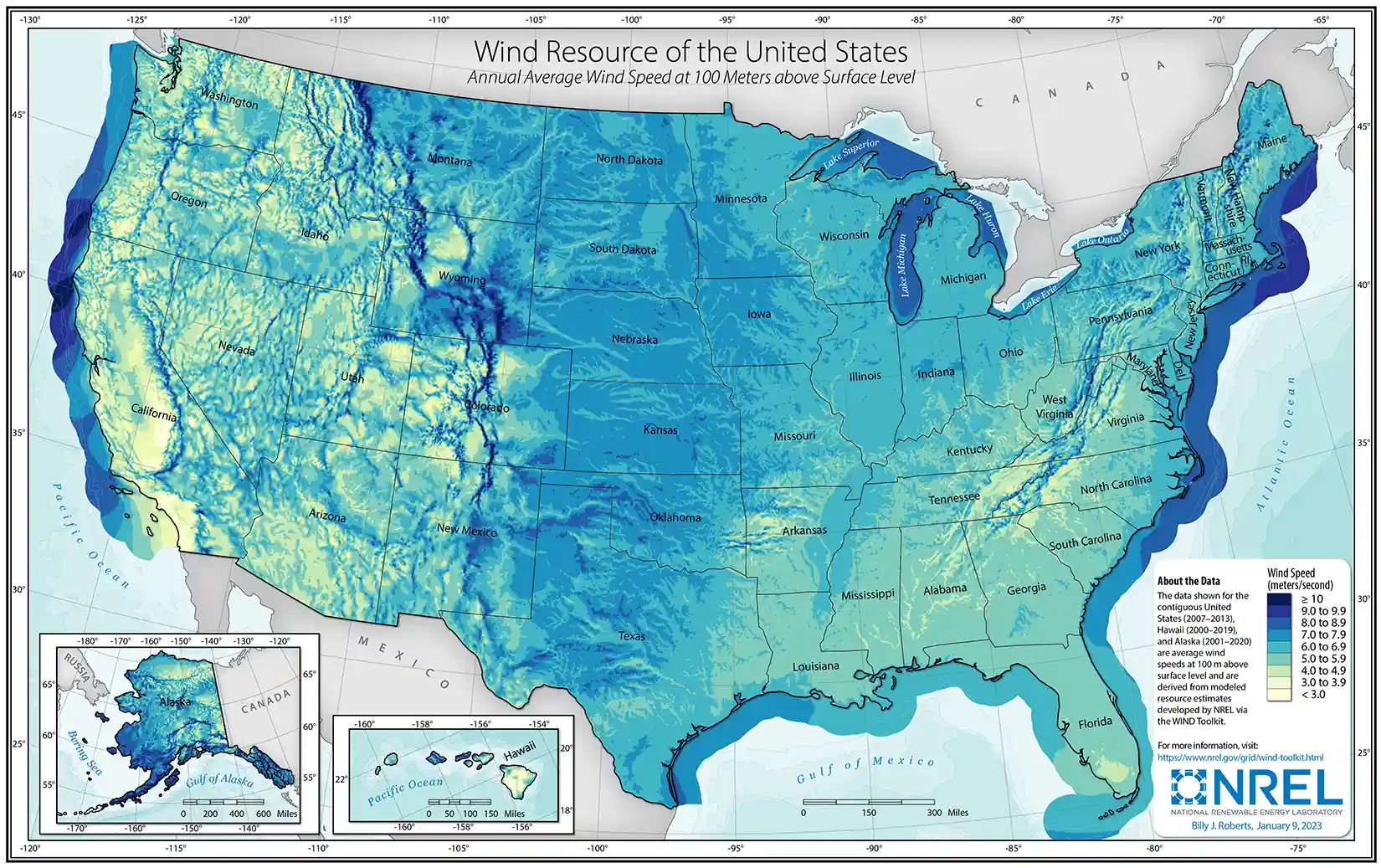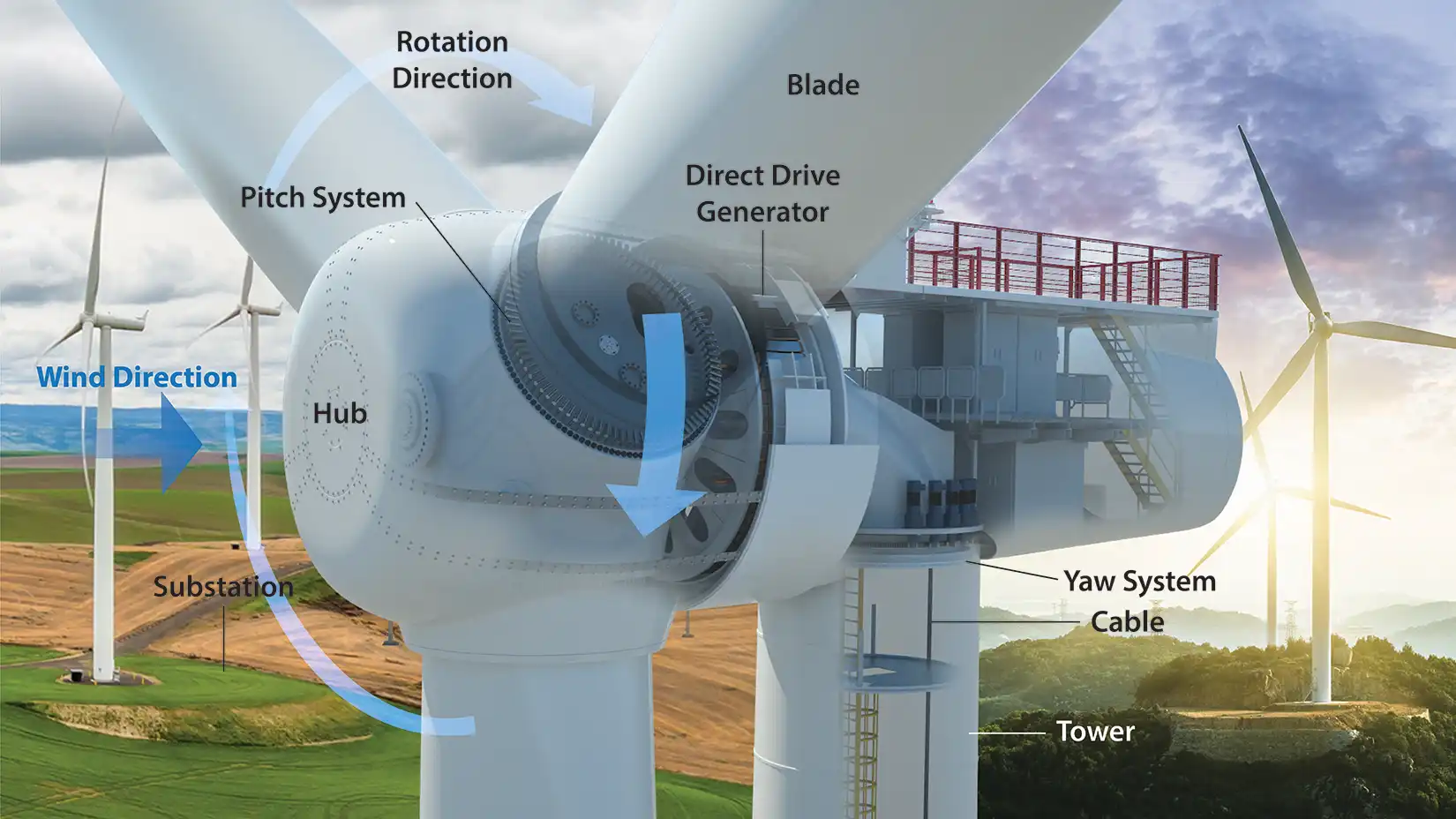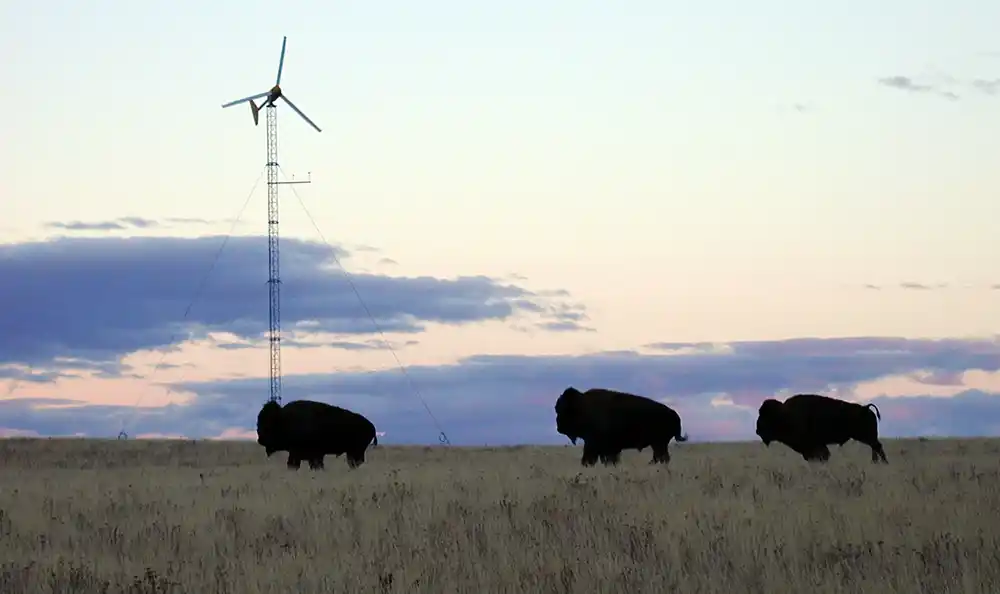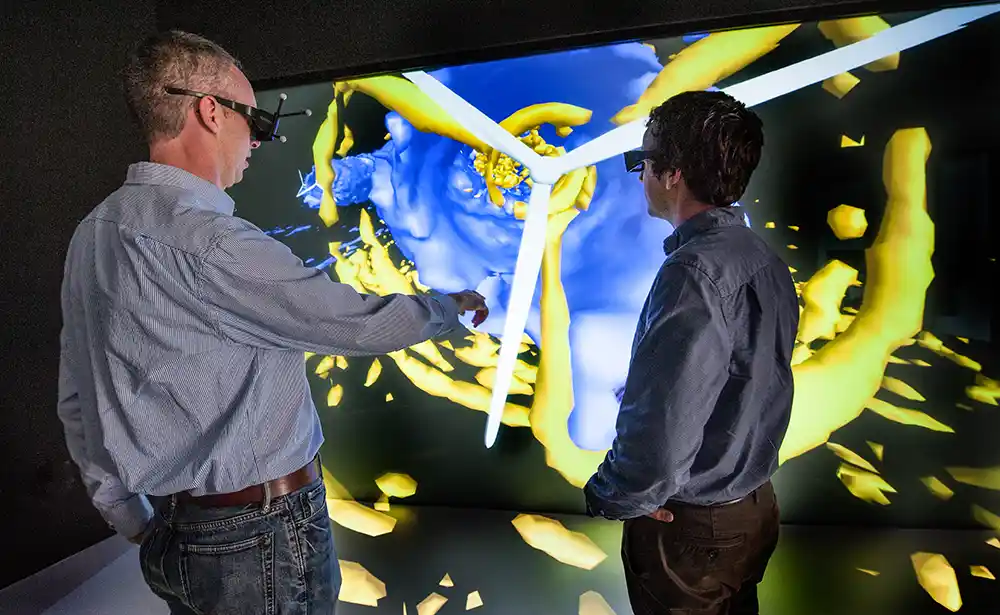Wind Energy Basics
Wind is an abundant source of electricity in the United States, with utility- and local-scale systems delivering power to homes, farms, communities, and cities.
Wind energy is old—so old that ancient Egyptians used this bountiful, blustery resource, according to the U.S. Energy Information Administration, to propel their boats down the Nile River. The first wind turbines (or windmills, their predecessors were called because they milled grain instead of generating electricity) were made from abundant materials, such as wood or reeds, which were woven into tight blades and spun to pump water irrigation for farms, grind grain, and, eventually, power entire communities.
Today's wind turbines use sleek, modern materials to generate electricity across the globe.
What Is Wind Energy?
To answer this question, it's best to start with another: What is wind?
Wind is born when pockets of the Earth's craggy surface get different amounts of sun and cool or heat faster than others nearby. To balance those differences, like mixing hot and cold water in a bathtub, air moves around the world—gaining or losing speed as it dips through valleys and sprints over rivers. That creates—you guessed it—wind.
Wind can be powerful enough to whisk birds through the sky, move sailboats across the ocean, and even rip trees from the ground. In comparison to all that, pushing wind turbine blades is easy! It's the movement of the turbines that creates electricity.
Want to know how much wind energy is humming across your state? Check out NREL's wind energy maps on the U.S. Department of Energy's WINDExchange.

This map shows the wind speed at 100 meters above the ground across the United States as modeled by NREL with estimates from the Wind Integration National Dataset Toolkit.
How Do Wind Turbines Work?
Wind turbines, like windmills, catch the wind's energy with propeller-like blades. These blades can have a horizontal axis, like a fan, or vertical one, like a merry-go-round. The most common design is a tall tower with three large blades on a horizontal axis. But some vertical-axis wind turbines look like eggbeaters, while others look like the windmills that populated farms a century ago.
Unlike fans, which use electricity to move air, wind turbines use moving air to generate electricity. When the wind blows, its force turns the blades, which runs a generator and creates electricity. Some turbine designs can produce more energy than others. For example, because winds can be more powerful and less volatile higher in the atmosphere, placing turbines on towers 100 feet (or 30 meters) tall—about the height of the Statue of Liberty—can help them generate more electricity. Wind turbine operators can also shift their machines to face directly into the wind—a control technique called yawing.
Can't picture this? Watch the U.S. Department of Energy's wind energy animation to see wind turbines in action.

A wind turbine's nacelle, which sits on top of a tall tower, can rotate and tilt with the yaw and pitch systems, respectively, to face the blades toward the wind so the generator can take the rotation and turn it into electricity. Graphic by Josh Bauer, NREL
How Do We Get Our Wind Energy?
There are several ways to get energy from wind. Wind turbines can be built on land, on lakes or in the ocean, in remote wilderness far from the power grid, within cities, or across vast plains.
Wind turbines can power an individual home, farm, or community or they can contribute to a power plant and they can hook up to other sources of energy in hybrid plants (like solar panels and batteries). Wind energy researchers are studying how the design, arrangement, and operation of wind turbines can maximize energy production in wind farms.
Today, most grid-connected wind farms are at least 1 megawatt or larger. The biggest wind farm in the United States spans 100,000 acres (enough to cover half of New York City) and can power more than 250,000 homes.
How Are Wind Turbines Used?
Wind energy can support the U.S. electric grid or local needs via utility-scale and distributed systems, respectively.

With multiple wind turbines working together, land-based wind energy plants can provide power to the U.S. electric grid to power homes, businesses, and more, while bringing income to landowners through land leases, like this turbine on a large wind farm in Oklahoma. Photo by Bryan Bechtold
Utility-Scale Wind Energy Is the Most Common
The majority of turbines are installed in plants on land, providing power to utility companies to send through transmission lines to customers, as one of the lowest-cost sources of electricity generation.
Researchers at NREL are categorizing wind resources on land, on lakes, and in oceans, while also advancing wind turbines to more efficiently and safely generate electricity at even lower cost.
Distributed Wind Energy Powers Remote and Local Communities
Distributed wind energy is a distributed energy resource, meaning it produces power. In this case, the turbines (typically smaller than utility-scale turbines, producing as little as a few kilowatts of power) operate locally to provide energy for nearby buildings or communities. New prototypes can even pop up as mobile, on-demand sources of power in disaster or defense scenarios.

This 15-kilowatt turbine, used for distributed energy, rotates around a horizontal axis, the most common kind. Photo from Bergey Windpower
Homeowners, farmers, businesses, and industries make use of distributed wind energy to pump water (to use as drinking water, to irrigate farms, and more) and to lower electric bills. Distributed wind turbines can even be connected to a power grid at the distribution level, too, generating income for the communities or landowners who produce more power than they need.
Distributed wind turbines are improving all the time, growing stronger, less costly, more resilient, and more efficient. Sites, like NREL’s Flatirons Campus, allow manufacturers of these turbine to test new designs that make them more affordable to landowners.
How Is Wind Energy Research Advancing?

Research into airflow around wind turbines helps make models more accurate so they can better evaluate the performance of new technologies, advanced controls, and hybrid systems to increase wind energy efficiency, integration, and safety. Photo by Dennis Schroeder, NREL
The wind energy industry is working to figure out what areas of research need more attention to expand the use of wind energy. This includes understanding how wind interacts with turbines behind (downwind from) others, developing high-performance computing models and smart (artificial Intelligence and machine learning) devices to improve operation, evaluating the best ways to verify new technologies in the field, and incorporating feedback from the industry and public.
On a smaller scale, researchers are studying different materials and designs that could make wind turbine blades lighter, longer, more durable, and better at creating energy. New technologies could also make wind turbines less expensive to manufacture, install, operate, and maintain. As a bonus, some new materials and processes could make wind turbines more reusable or recyclable, which can cut down on waste, too.
Additional Resources
Wind Energy Basics (U.S. Department of Energy)
Advantages and Challenges of Wind Energy (U.S. Department of Energy)
Wind Energy Educational and Workforce Development (U.S. Department of Energy)
Energy Kids: Wind Basics (U.S. Energy Information Administration)
Share
Last Updated Sept. 2, 2025
